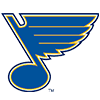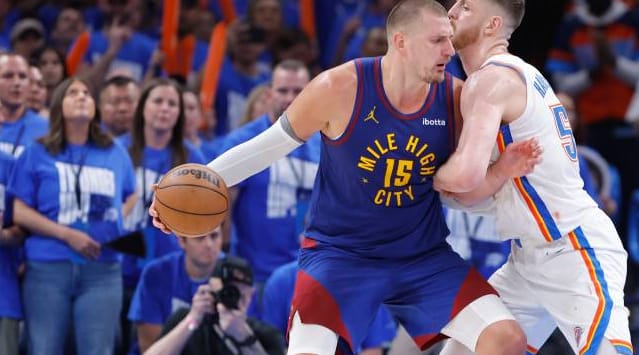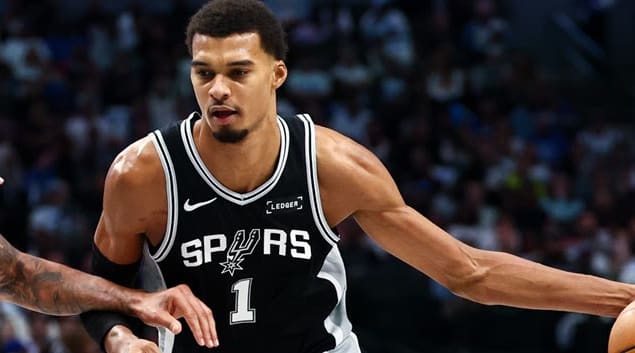General Lineup Construction Tips
In daily fantasy basketball, there are two basic kinds of lineups you want to consider. I think of them as Studs & Scrubs and the All Average team. On a given night, I may deploy both types of lineups in different games, but most often I put the same lineup into all the games I enter that night.
My choice depends on the number of NBA games and the specific teams playing that night (more on this another week). The DFS (daily fantasy sports) dogma is that you use something more akin to a Studs & Scrubs lineup in GPP (guaranteed player pool) and tournament style games, but use a more All Average lineup strategy for head to head (h2h) and 50/50 (double up, where top half of the field doubles their entry fee, minus rake).
In either case, it's essential to build your lineup around a solid, reliable core of, ideally, three guys. Players in DFS are valued according to their skill, their opportunity (minutes) and their matchup.
Your core should be the best of the best in all three categories. Kevin Love is a mainstay core player for me this season, regardless of the type of lineup I'm building. If he plays on a given night, he plays for me. Chris Paul, Stephen Curry, Carmelo Anthony, LeBron James, Kevin Durant, and Paul George are also good guys to use as your top player. They average over 40 fpts (fantasy points) per night and often hit 50 or 60. (Note: Exact fpt totals vary between sites, use this range as a guideline and scale to your preferred DFS site).
If you have a lot of choices for your top player on a given night due to a heavy slate of games, the factors to consider are DvP (defense versus position) and risk of a blowout in which your Stud might play reduced minutes and have a hard time reaching the value you need. Our daily cheat sheet articles can warn you which players are at risk in these situations.
Your other core players probably come from the next tier, in terms of their salary and their average fantasy points per game. The key in selecting these players is to ensure that their relatively high average has a very low standard deviation, or variability. You want a couple of guys that score 32-38 fpts just about every single night. Players that you want to target could include Anthony Davis, Pau Gasol, John Wall, Dirk Nowitzki, Evan Turner, Ty Lawson, James Harden and Dwyane Wade (when healthy). They're not the sexiest or flashiest picks (Davis being the possible exception), but that's not what you're after here.
If you're rolling with the All Average lineup, you'll want to stick with a theme of consistency. You don't want someone in your lineup with an up and down history of 10, 38, 42, 7 fpts. You want someone playing around 30 minutes a night and scoring at least between 20-30 fpts every night, and sometimes more. Examples that I often use are Klay Thompson, Bradley Beal/Martell Webster, David Lee, Kevin Martin, Chandler Parsons, Josh Smith, Kyle Lowry, Tony Parker, Tim Duncan, Kemba Walker, Jeff Teague, Arron Afflalo, Zach Randolph, Monta Ellis and Russell Westbrook (depending on salary).
The reason for a player's consistency might be opportunity (such as in Webster's case) or skill and experience (as with Duncan and Parker). The salaries of these guys will vary quite a bit, and you'll have to work to fit your lineup in under the cap. You may only be able to use one high-priced stud in the All Average lineup. While consistency over a long enough sample size is your first priority, you'll want to optimize your selections by exploiting favorable matchups. Even the most consistent players have slightly better or worse games than their average, so obviously, aim for the players that have the best shot at one of their best games.
To determine which players will have the best opportunity to be consistent on a given night, you should look at DvP, home/away splits or extra opportunity owed to injuries on the team in order to pack a little upside into your lineup. Hopefully you end up with an Above Average lineup, but the purpose of the All Average lineup is merely that it shouldn't completely tank and will keep you in the running for one of the money spots, though maybe less likely to be in the running for the top money slot.
If you're building a Studs & Scrubs lineup, you'll load up on a few more of those tier one or tier two guys. Alternatively, depending on the matchup, you could look to the likes of Dwight Howard, Michael Carter-Williams, Damian Lillard, Monta Ellis, Goran Dragic, DeMarcus Cousins, Blake Griffin, LaMarcus Aldridge or Nikola Vucevic. All of these players have the potential to score 60 fpts, and many have done it this year, but their consistency is a notch below the core player level for me. In this type of lineup, if any of your studs posts 25 fpts, there's a good chance you're done.
Knowing what constitutes a good value play is the key to winning your games in DFS. Clearly, you want a lot of fpts for only a little salary. When building an initial lineup, I'll often try to load one slot at each position with a Stud and then fill in the other spots with a value priced Scrub. But which low salary guys should you target? The best choice is a clear backup player who is starting in place of an injured star. The Andray Blatche story this week, which is now being told by Kirk Hinrich and Kosta Koufos, has been beautiful. Tony Wroten and Nate Wolters had their value moments a couple of weeks ago. Other possible targets include a sixth man, that guy off the bench that makes the most of his 18-25 minutes, or a low priced starter that rarely has a huge game but always gets you the 20 fpts you need to reach value. Some of those kind of players with lower ceilings but higher floors are Tony Allen, Jared Sullinger, Tristan Thompson, James Anderson, P.J. Tucker and, my favorites, Thabo Sefolosha and DeJuan Blair fit the bill.
You also have to be on the lookout for false value plays. The first instance of a false value play is when there is no clear backup to at star player. Take the Knicks' point guard rotation behind Raymond Felton for example. Felton's recent injury lead to the point guard duties waffling between Beno Udrih and Pablo Prigioni, with neither having predictable value. Udrih had erratic value in the games he played over 20 minutes in: 8, 5, 35, 12, 30 fpts. Prigioni also had erratic value in the games he played over 15 minutes in: 6, 29, 6, 15, 5, 7 fpts.
I was fortunate enough to avoid those good games because I avoid those murky situations in all of my lineups. I'm not a fortune teller, after all, so I'm not going to try and pick the one or two games out of 10 in which a player is going to actually produce a relevant fpts total.
Another example might be all of the Bucks. There are a lot of low-priced players with talent on the Bucks, but they're not producing consistently yet, individually or as a team. At the beginning of the season, I tried using players in the Bucks' frontcourt at their rock-bottom prices quite a bit. Sometimes they hit value, sometimes not. It got too frustrating for me, but at the first sign that things start gelling in Milwaukee, you might get a few days of awesome value from Ersan Ilyasova or O.J. Mayo. Based on his salary, the DFS sites I play on do not believe in Khris Middleton yet, making him a great value play if you trust in his minutes.
Your salary cap will likely prevent this next caveat, but just in case it doesn't, I would mention that guys that start out as terrific value plays, but keep their job long enough (and do it well enough) can see some pretty steep salary increases, depending on where you play your DFS. So, many of the Martell Websters of the world end up finding themselves playing out of the good value tier and into the consistency tier. There is a lot of variability in how often different sites update their player salaries. Some do it daily, some seemingly never do it. So, you have to know your site(s). What might be touted as a great value play on one site is fair market price on another.
The last thing I'll say about value reflects a point I made in my last article. A bad player (in fantasy) in a good situation is not necessarily a good value play. The best example of this I can think of was the replacement of Rajon Rondo with Avery Bradley. Bradley is a talented baller, but his style of play doesn't lend itself to fantasy stardom. His low price as a starting point guard may be tempting, but he is not what you want in your Studs & Scrubs lineup.
There are two other things I try to avoid in creating DFS lineups. The first is the mistake many novice players make by feeling like they have to take the most expensive guy they can afford to fill their final roster spot by using all of their remaining salary. I want a justifiable reason for having every single player in my lineup and "he fit under the cap" is not justifiable in my book. In fact, before I even go to my DFS site, I do my research on the days' games and come up with a list on paper (yes, actual paper, it's a ritual of mine) of players I'm targeting at each position. I try very hard to build my lineups around that list. I do deviate, of course, but having an ideal to strive for keeps me honest.
Lastly, I want to mention the folly in chasing points from a player's last game. It's very tempting to roster the guy who catches lightning in a bottle and goes off for a 25/7/4 line the last time he played. The very fact that it's referred to as "catching lightning in a bottle" suggests it's not the best idea. This is something that I'm currently collecting data on and will write about more extensively in the near future. I've always been averse to chasing points, but I'm no longer sure that's 100 percent smart, thus the research. I think in some cases those wow games that come out of the blue can be the start of a positive trend that would be advantageous to follow. Stay tuned into this column, and we'll breakdown whether or not lightning can strike twice.
It's important to remember that DFS is hard work that won't always pay off. I do better when I have an intelligent plan and stick to it, but I also advocate trying out some different plans, either with different lineups on the same night, or on different nights and seeing what works for you.
Thanks for reading, and if you have specific questions, you can hit me up on Twitter or in the comments below.
























